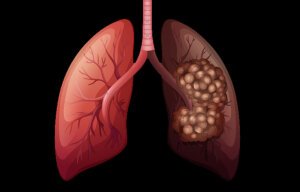World Suicide Prevention Day (WSPD) was initiated by the International Association for Suicide Prevention (IASP) in 2003. World Health Organization (WHO) and the World Federation for Mental Health are the co-sponsors of the day. World Suicide Prevention Day prioritizes the need to de-stigmatize mental health and, increase the availability of mental health resources.
Suicide is the act of intentionally taking one’s own life. According to WHO, someone commits suicide every 40 seconds, which amounts to about 800,000 suicide globally every year. The main reason behind suicides is mental illness and can occur throughout the lifespan of an individual. Suicide occurs in low and middle-income countries and is the second leading cause of death among 15-29-year-old people globally in 2016. Suicide affects families, communities, and entire countries and has long-lasting deleterious effects on the people left behind.
The theme of WSPD 2021, “Creating Hope Through Action,” reflects on the need for collective action to address this urgent public health issue. All of us – family members, friends, co-workers, community members, educators, religious leaders, healthcare professionals, political officials, and governments – can take action to prevent suicide in our communities..
RISK FACTORS
- Mental disorders (including depression, bipolar disorder, autism spectrum disorders, schizophrenia, personality disorders, anxiety disorders)
- Nihilistic beliefs
- Physical disorders (such as chronic fatigue syndrome)
- Substance abuse disorders (including alcohol use disorder and the use of and withdrawal from benzodiazepines)
- Inability to deal with life stresses such as financial problems, relationship break-up, chronic pain, and illness
- Conflict, disaster, violence, abuse, or loss, and a sense of isolation are strongly associated with suicidal behaviour
- Vulnerable groups who experience discrimination, such as refugees and migrants; indigenous peoples; and prisoners
WARNING SIGNS
Warning signs that someone may be at immediate risk for attempting suicide include:
- Talking about wanting to die or wanting to kill themselves
- Talking about feeling empty or hopeless or having no reason to live
- Talking about feeling trapped or feeling that there are no solutions
- Feeling unbearable emotional or physical pain
- Talking about being a burden to others
- Withdrawing from family and friends
- Giving away important possessions
- Saying goodbye to friends and family
- Putting affairs in order, such as making a will
- Taking risks that could lead to death, such as driving extremely fast
- Talking or thinking about death often
Other warning signs that someone may be at risk for attempting suicide include:
- Displaying extreme mood swings, suddenly changing from very sad to very calm or happy
- Planning or looking for ways to kill themselves, such as searching for lethal methods online, stockpiling pills, or buying a gun
- Talking about feeling severe guilt or shame
- Using alcohol or drugs regularly
- Acting anxious or agitated
- Changing eating or sleeping habits
- Showing rage or talking about seeking revenge
PREVENTION AND CONTROL
- Psychotherapy is also known as talk therapy in the form of Cognitive Behavioural Therapy (CBT) or Dialectical Behaviour Therapy (DBT).
Cognitive Behavioural Therapy is a popular treatment option for individuals suffering from a variety of mental disorders. In this method of psychotherapy, one is taught new ways of dealing with stress and stressful life experiences. In this manner, when thoughts of suicide arise, you can redirect those thoughts and cope with them in a different way than attempting to take your own life.
Dialectical Behaviour Therapy is used to help an individual recognize disruptive or unhealthy feelings or actions. In relation, this therapy method then introduces techniques on how to deal with difficult or troubling situations. More research is needed on psychotherapy related to suicide prevention though, as DBT has been shown to decrease the prevalence of attempted suicide but has shown no effect on completed suicides.
- Medications can be prescribed as a preventive method to suicide; however, controversy exists in this method as many of the medications used in treating mental disorders include increased risk of suicide as a side effect. Antidepressants especially carry a risk of a potential increase in suicidal thoughts and behaviour, but this risk might be dependent on age. Clinical research has shown that young adults increase their risk of suicide and suicidal thoughts when taking antidepressants, but in older individuals, this side effect diminishes.
- Increased Awareness is also a prevention technique. Research indicates that many individuals who have completed suicide or attempted suicide did seek medical attention in the year prior; however, the warning signs may have been missed. Increased education and awareness among medical professionals might decrease suicide rates in the future.
CONCLUSION
It is important to note that suicide is not a normal stress response. Suicidal thoughts or actions are a sign of extreme distress and should not be ignored. If these warning signs apply to you or someone you know, get help immediately, especially if the behaviour is new or has increased recently.










